Love is not only in the air nowadays, but in smartphones too. It can also be a lucrative business for rational entrepreneurs. The global dating app market is transforming. IBISWorld research showed that over the past five years, in the United States alone, its annual growth was 11.9%, and in 2019 the total niche revenue reached the $3 billion mark. It is expected to surpass $8.4 billion by 2024. These figures are an excellent reason to think about creating your dating app like Tinder.
Despite there being many players in the market, a product that would meet all user needs has not yet appeared. This means that there are still niches that you can target to build a thriving business that helps users search for a soulmate. All it will take is a great idea and quality implementation.
But what would users expect from a brand new dating app? How can you create a product to attract your target audience, gain momentum and make a profit? We cover these and other issues in detail in our guide.
What Do Users Expect From a Dating App?

When looking for the ideal concept for a future application, startups often forget that any product must solve real problems experienced by the target audience. Otherwise, even the brightest idea will fail. Hence, it is paramount that dating app development is targeted at a specific but sufficient audience. It will allow you to pinpoint its needs and meet expectations.
Security and Privacy
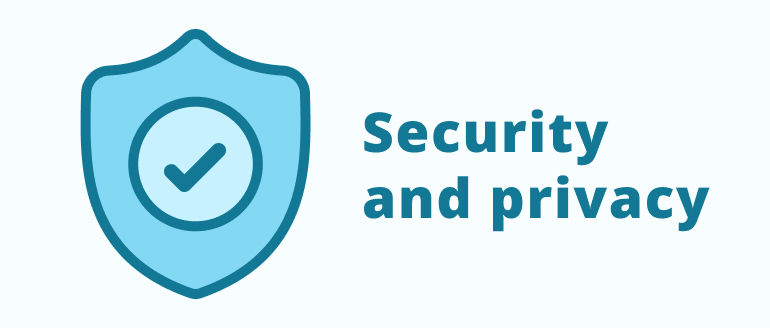
You might be surprised to know that privacy and security are the most critical factors for dating apps users. As they are a top priority, you can turn this need into a unique value proposition of your product and make it an essential part of your marketing strategy.
User security is based on creating conditions where all parties will be fully protected both inside and outside the platform. It can include profile verification, message filtering, the ability to blacklist unwanted contacts and block nudity or inappropriate content. For instance, Tinder has gone beyond standard measures and added an SOS button with a location tracking function and emergency assistance. At the same time, Sweet Pea uses a “Hush” feature to flag offensive messages. This means it’s up to users to decide whether to open the content or not.
Data privacy and security must also be implemented at a high level to avoid data leaks and misuse. It only takes one incident to destroy a product, so approach this issue responsibly and choose only professional developers who can create a truly secure solution. What’s more, be sure to request permission to process users' personal data, indicating how and why it is stored within a dating app. This aspect in particular applies to the European market, where GDPR compliance is a must.
Personalized Experience
People no longer want to use one-size-fits-all dating sites and expect a personalized experience. This factor has led to the emergence of many niche sites that bring together people with specific interests, values and lifestyles. For example, the JSwipe dating app is aimed at Jews, Hater unites people based on what they don't like, and Sizzle has brought bacon lovers together.
You can target one niche or create a sophisticated multi-niche platform. The main thing is that a final product should have a clearly defined target audience and benefits it can offer them.
You can divide categories into:
- Age group (25-35, 35-55, 55-80 years, etc.)
- Sexual orientation (heterosexual, gay dating, bisexual, etc.)
- Religion (Christianity, Islam, atheism)
- Interests (sports, cooking, music, fishing)
- Types of relationship (serious relationship, one-night stands, finding a partner for a certain period)
- Exotic tastes (BDSM, etc.)
- Health status (mental and physical disorders)
- And many other factors
There are diverse niches but, before choosing one, be sure to research its popularity and possible profitability. For instance, creating a dating app for fans of a specific TV show is potentially dangerous because you cannot be sure of its long-term viability.
User Experience

The next most significant aspect of a dating app is an intuitive interface. The efforts of developers, marketers and business analysts will all be for nothing and your potential profits will never be realized if users cannot find the registration button or reply to the message. An app should be simple, lightweight, fresh and engaging. This is the only way to create not just another regular product, but a phenomenon, a successful business and a new way of life, eventually.
Every detail should be carefully considered. Everything from colors to navigation within an application has the potential to add value to your product. Features should make the most of a smartphone's capabilities like camera, location, push notifications, etc. One of the most influential factors in a viral dating app is the gamification principle. For example, on Tinder, you don't need to reply to everyone’s messages; a swipe is enough to determine whether you like a user or not. Thanks to this concept, the application receives over 1.6 billion swipes per day, and its paid subscriber base is 6.03 million users.
Market and Competitor Research
To find out exactly what users expect from a dating app, you need to perform a SWOT analysis of direct and indirect competitors. This is where you should start with any idea. This approach will make your product more competitive.
You should take the following into account:
- Strengths of the market players.
- Weaknesses. Understanding vulnerabilities is essential when researching competitors. You can build your product and strategy with these in mind and eliminate or, at least, control them.
- Opportunities. Knowing and comparing business opportunities is primary in strategy building, niche selection and application development.
- Risks. Analyze not only potential business threats but also real challenges that competitors face and how they overcome them. Companies grow from local projects to international giants not because of unlimited budgets but due to the ability to foresee risks and effectively mitigate them.
Let's take a look at some big players in the online dating market.
Tinder
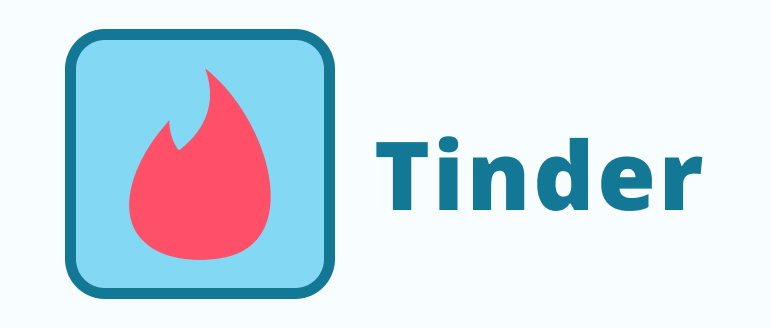
Tinder appeared in 2012 and changed the online dating landscape. Time called it a "cultural phenomenon," and it’s true. Today, the dating app with its unique swipe concept has been installed on smartphones by over 50 million users worldwide, and the number continues to grow. The product is available for both iOS and Android platforms.
The intuitive UX with swiping left and right is truly addictive, especially since the potential reward is a matching couple. Integration with Facebook and Instagram allows you to forget about spending time filling in profiles and immediately start swiping. It's worth noting that the app was so innovative and considerate of the smallest details that Tinder 2012 and 2020 are practically the same. Despite the emergence of numerous competitors, Tinder still holds a leading position in the market.
The app is most in-demand in the USA, Canada, Australia, Western Europe and even India.
Badoo
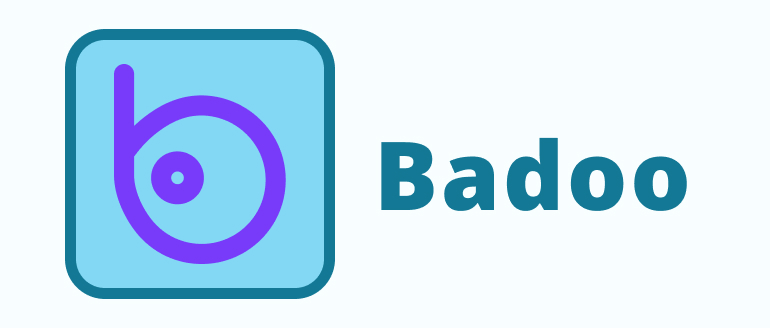
Badoo is one of Tinder's biggest competitors, taking over the other half of the world (Eastern Europe, Latin America, Russia, Oceania). The number of social network users is impressive - 453 million.
A dating app was launched in 2011, while the product itself has been around since 2006. Unlike Tinder, in addition to dating by swipes, a user can start a chat with anyone. However, a smart system of restrictions (including the ability to send no more than two messages to a stranger) protects against spam and unwanted attention.
An impressive safety feature of the product deserves special mention. Thanks to the photo verification function, you can be sure of a person’s identity and appearance before you start communicating. The app is available for both iOS and Android devices.
Bumble

Bumble is a revolutionary app that reinvented the dating format. It has swipes, as in the previous two examples, but only women can initiate chatting and dating. This feature has drawn attention to the new social network. The app was released in 2014 and has already attracted 100 million registered users, mostly under 35 years old. It is available on iOS and Android.
Wondering how to build
an exclusive software product for your business?
CONTACT USHow to Build a Location-Based Dating App?
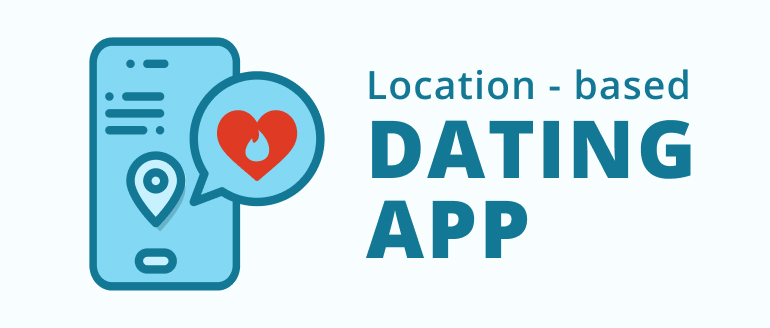
While most products still focus on traditional personal information in profiles and surveys, location-based dating apps help ensure exact matches. Tinder, which was the first to roll out such a format, is the most prominent example of connecting users by geolocation. Accordingly, let’s take a closer look at the must-have functionality of a location-based dating app using Tinder as an example.
Registration and Authorization
The login process is quite simple: users are prompted to use a Facebook account. They can also authorize via a phone number. In the first case, algorithms process information about a person from the social network, removing the need to fill out a lengthy questionnaire and create a profile.
Profile Editing
A user can import basic information from Facebook/Instagram or fill in personally if desired. The profile includes the following data:
- Age
- Location
- A few words about yourself
- Mutual friends on social networks
- Similar interests
This approach allows you to immediately start searching for a partner without wasting time on administration.
Location
Geolocation is a crucial function of a dating app. The initial idea was bringing people together based on their location. Therefore, an application continuously tracks users’ geolocation when using the app. A limited search radius is available in a free version; however, users can remove these restrictions by purchasing a subscription.
Search Settings
Tinder users can set parameters for finding potential partners such as age, gender and distance. The paid version supports advanced search.
Picking a Partner With a Swipe
This feature is both elementary and innovative. It was swiping that made Tinder famous around the globe. By making the process of finding the perfect partner as intuitive as possible, swiping has also become an element of gamification in the app. As a result, today, there is no better time killer than Tinder: swiping left means "dislike," while swiping right means "like." That's genius because it's so obvious.
Matchmaking Algorithms
The dialogue may start only in case of mutual likes. Thus, the app not only needs to protect its users from unwanted communication but also ensure the maximum possible matches.
Messenger in Real-Time
After users like each other, they can proceed to communicate in a private chat. In-app messenger should support sending text messages, emoticons and animated elements.
Push Notifications
This feature is essential for any product, including a dating app. It not only notifies users about private messages and new check-ins but also propels more frequent app interaction.
If you are not going to create a Tinder clone, you can consider some unique features to help develop a dating app:
- Use advanced artificial intelligence algorithms. The development of AI unlocks unlimited possibilities for dating app development. A profound analysis of user preferences, interests and other factors will make the matchmaking process even more accurate, which, in turn, will boost interaction.
- Add risk assessment. Security, as we have already stated, is the number one factor in deciding whether to use a particular product, especially when it comes to the online dating market. Leverage the power of AI to conduct additional identity checks and assess risk. Thus, you can "weed out" dubious accounts or request a more thorough verification for them.
- Develop a spam filter. Receiving unwanted ads, messages and other stuff undermines the application’s reputation. Users want to get acquainted, not clean messengers from their junk folder. Identifying potential spam messages will make using a platform more comfortable.
Whatever you come up with, a new lesbian dating app or an app for red sneaker lovers, implement it simply, efficiently and using up to date technologies. It will provide a competitive advantage and attract a loyal audience.
Wondering how to build
an exclusive software product for your business?
CONTACT USHow Do Dating Apps Earn Money?
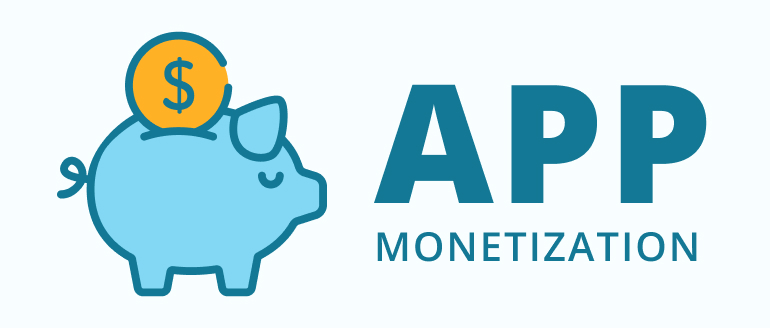
Monetization is a vital aspect of creating any product. You must foresee ways to make money while shaping an idea and build the fundamental mechanisms into the platform. Most dating apps use one or more of three business models: subscription, freemium and in-app purchases. 90% of the products in the online dating market utilize the freemium model. In-app advertising and affiliate networks can also generate income.
Subscription
This concept is prevalent among VIP applications that focus on more exclusive partner search or provide additional privacy. By offering users access to premium features through subscription, you can easily monetize your product. Luxy, Zoosk and Chemistry platforms are examples of this monetization method.
Freemium
A consumer can download a dating app and use its essential features for free. Additional features such as profile boost in search results, super likes, unlimited messages, advertising opt-out, or increased search radius go for a fee. Bumble, OkCupid and other dating apps act as a freemium model.
In-App Purchases
In-app purchases are a simple and common monetization method. The purchase of digital gifts and certain premium features without paying for a subscription plan is in demand among users. Happn, Hinge and others are exponents of this strategy.
In-App Advertising
In-app advertising is amongst the most common ways to profit from a product. You can use this monetization approach without sacrificing user experience by choosing a relevant and native advertising method, not clogging up the app with intrusive offerings of hemorrhoid ointment. For example, Tinder launched a campaign for the Ex Machina movie by creating a character’s profile. This ad went viral, boosted the app’s visibility and brought in new users.
Affiliate Network
This type of income involves not only advertising partner companies on the platform, but also offline monetization. For instance, inviting translators from a specific company to facilitate communication between users. Another option is displaying information from partners when recommending places or services, suggesting the nearest restaurant for a date, for example.
If you have decided to develop a dating app and are searching for a company that will build a high-quality and advanced product with unique safety requirements, then Owlab specialists are ready to collaborate!
Share your idea, and we will bring it to life in the best possible way: from prototyping to market launch and post-release support.